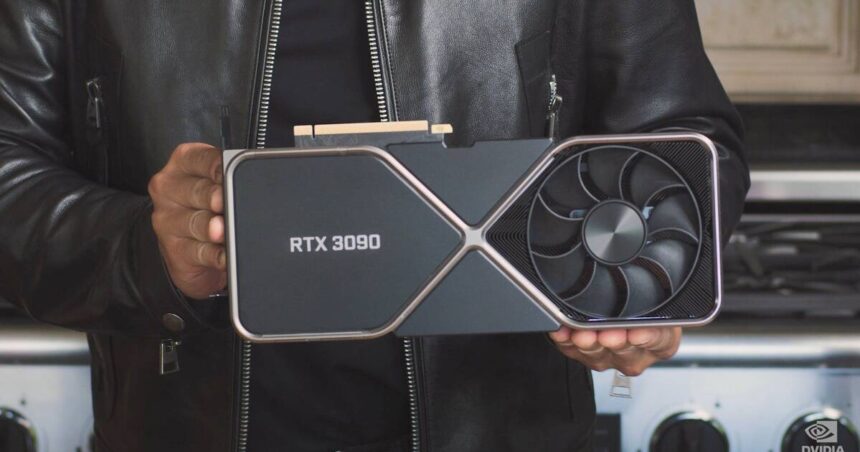Based on the information provided, it seems Microsoft is developing a new network interface card (NIC) to allow faster data transfer speeds between its servers. A few key points:
Microsoft aims to reduce reliance on Nvidia for AI hardware, specifically network cards that move data between servers.
- They are creating their own network card to enable faster data movement compared to the current Nvidia cards.
- This new NIC would be an alternative to the one Nvidia currently supplies.
- The goals seem to be cost savings for Microsoft and also improving performance when using Nvidia AI chips/GPUs in their servers.
- By creating a proprietary high-speed NIC, Microsoft can optimize data flow for its specific server infrastructure and workloads.
Microsoft is working on a fast server networking card to handle AI data transfer itself instead of using Nvidia’s version, for cost and performance reasons. This would allow faster movement of data between Microsoft AI servers to improve throughput and efficiency.
Why does Microsoft want its own AI hardware?
Microsoft’s recent decision comes at a time when Nvidia is experiencing a surge in demand for its AI chips. This has sparked intense debate over the sustainability of this boom and the potential erosion of Nvidia’s dominance due to the emergence of rival AI technologies and companies like Microsoft seeking to reduce their dependence on Nvidia.
Nvidia holds a leading position as the supplier of AI chips for data centers, where they are utilized to train and execute machine learning algorithms powering services like voice recognition, translation, and product recommendations. These chips, known as graphic processing units (GPUs), boast significant parallel computing capabilities, making them well-suited for processing large volumes of data.
However, Nvidia faces competition in the AI sector from companies like Intel, AMD, Google, Amazon, and Alibaba, all of which have developed or acquired their own AI chips to compete with Nvidia or reduce reliance on it. Additionally, numerous startups such as Graphcore, Cerebras, and Groq are innovating in AI chip design, further intensifying competition in the market.
FPGAs join the battle between GPUs and NPUs
Microsoft has also delved into AI chip development with its Project Brainwave, which utilizes Field Programmable Gate Array (FPGA) technology. Unlike GPUs, FPGAs offer greater flexibility as they can be reconfigured to suit various AI tasks. However, Microsoft still relies on Nvidia GPUs for some of its most demanding AI applications, such as its Azure cloud service and Copilot chat.
To enhance server performance with Nvidia GPUs, Microsoft employs a network card called Mellanox ConnectX, acquired by Nvidia last year. This card facilitates faster data transfer between servers, reducing bottlenecks and improving efficiency.
However, Microsoft aims to minimize reliance on Nvidia products to optimize its servers, leading it to explore the development of its own network card, as reported by The Information.
What implications does this move have for the AI market?
Microsoft’s decision to create its own artificial intelligence hardware shows just how much competition there is in that industry right now. Companies are all trying to stand out from one another and get an edge in the market. It also signals that AI is going to be incredibly important for future technologies across many sectors.
However, I don’t think Microsoft is going to completely abandon using Nvidia’s chips. Nvidia still makes the most advanced stuff out there. What might happen is Microsoft relies less on Nvidia and uses some hardware from other companies as well. That gives Microsoft more flexibility and bargaining power.
On the flip side, Microsoft’s decision could really hurt Nvidia’s bottom line and cut into their market share if other companies also opt to build their own AI chips. Nvidia has been the leader, but they now have to keep pushing boundaries and making their products more appealing to hold onto that top spot.
If they want to keep their leadership in AI technology, they need to make sure they don’t fall behind on innovation and providing value to customers. They face more competition now, which could destabilize their dominance if they aren’t proactive.
The AI sector is clearly entering a new era. Microsoft’s gamble here is risky for Nvidia, but it speaks to the transformative potential of artificial intelligence across the tech landscape. And that means unprecedented opportunities alongside intensifying competition.










